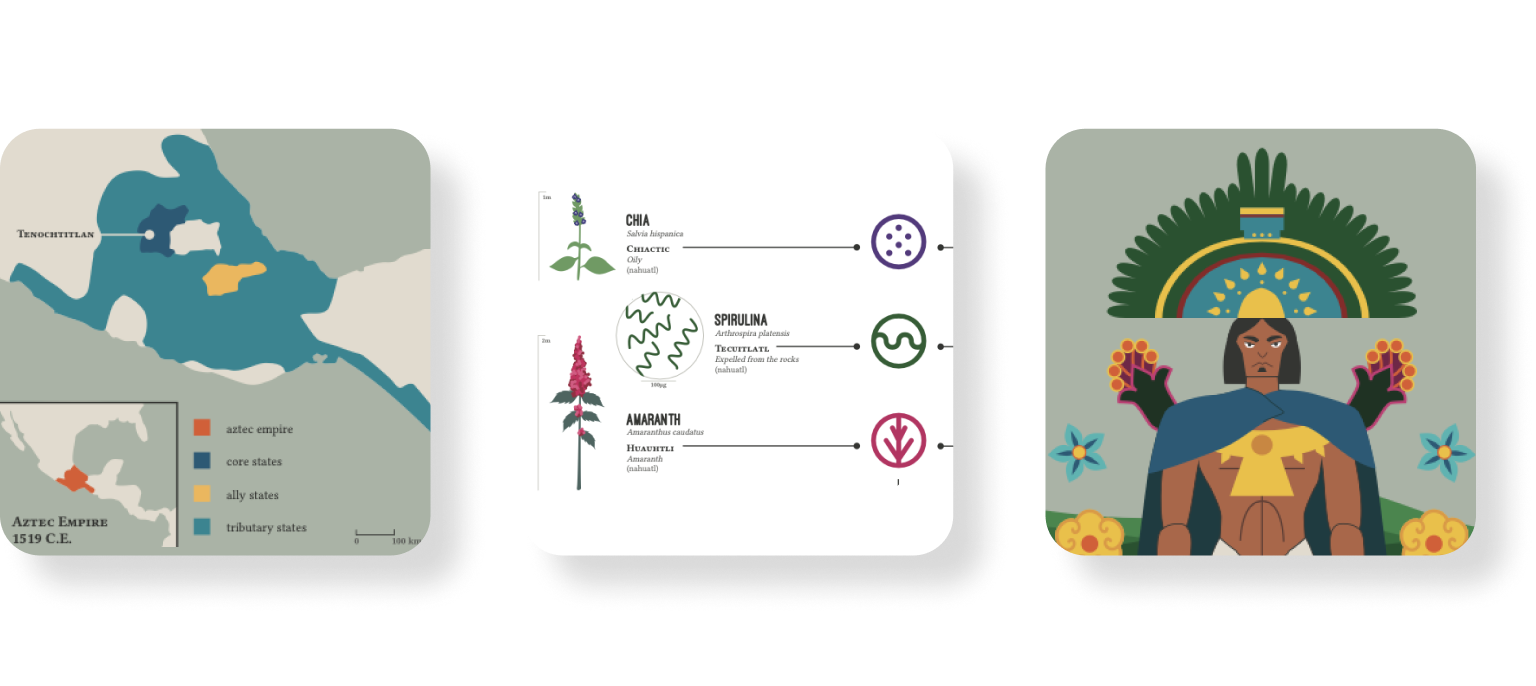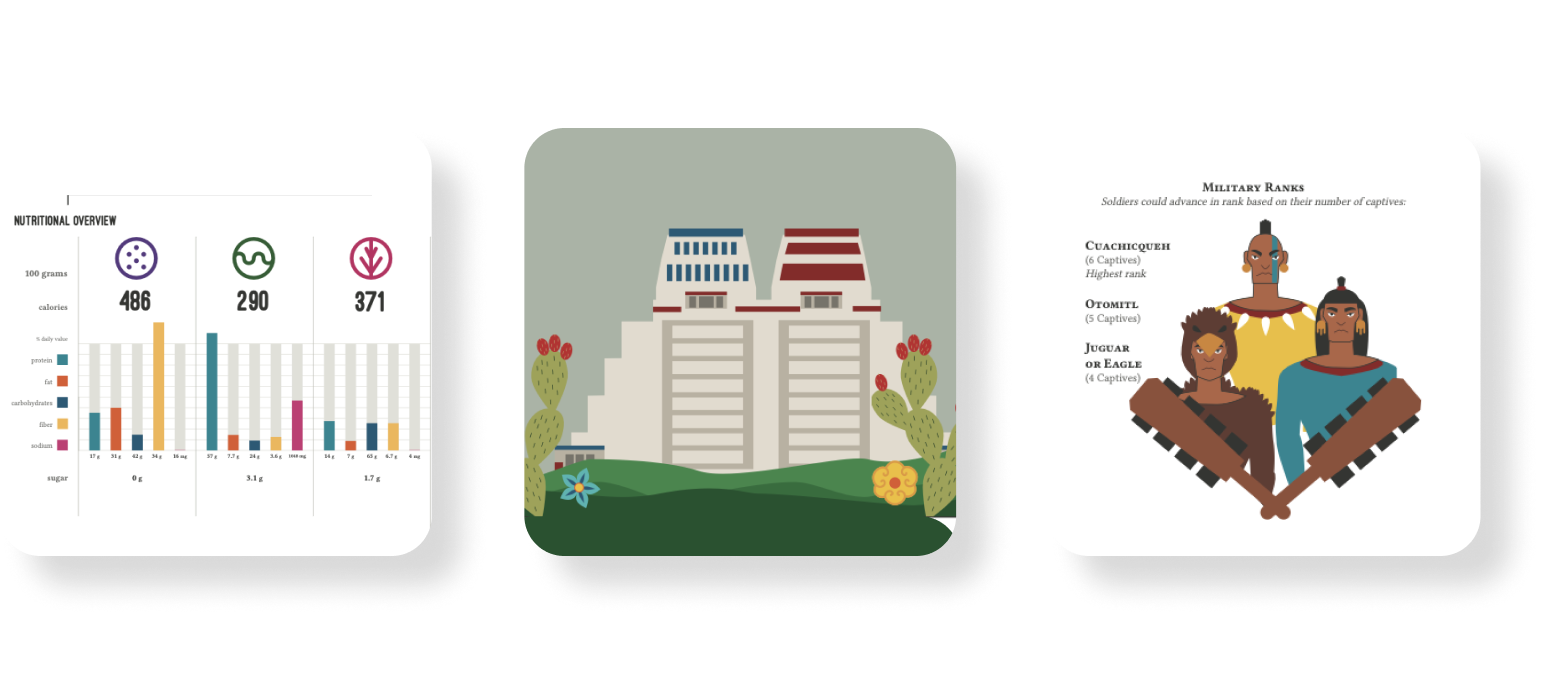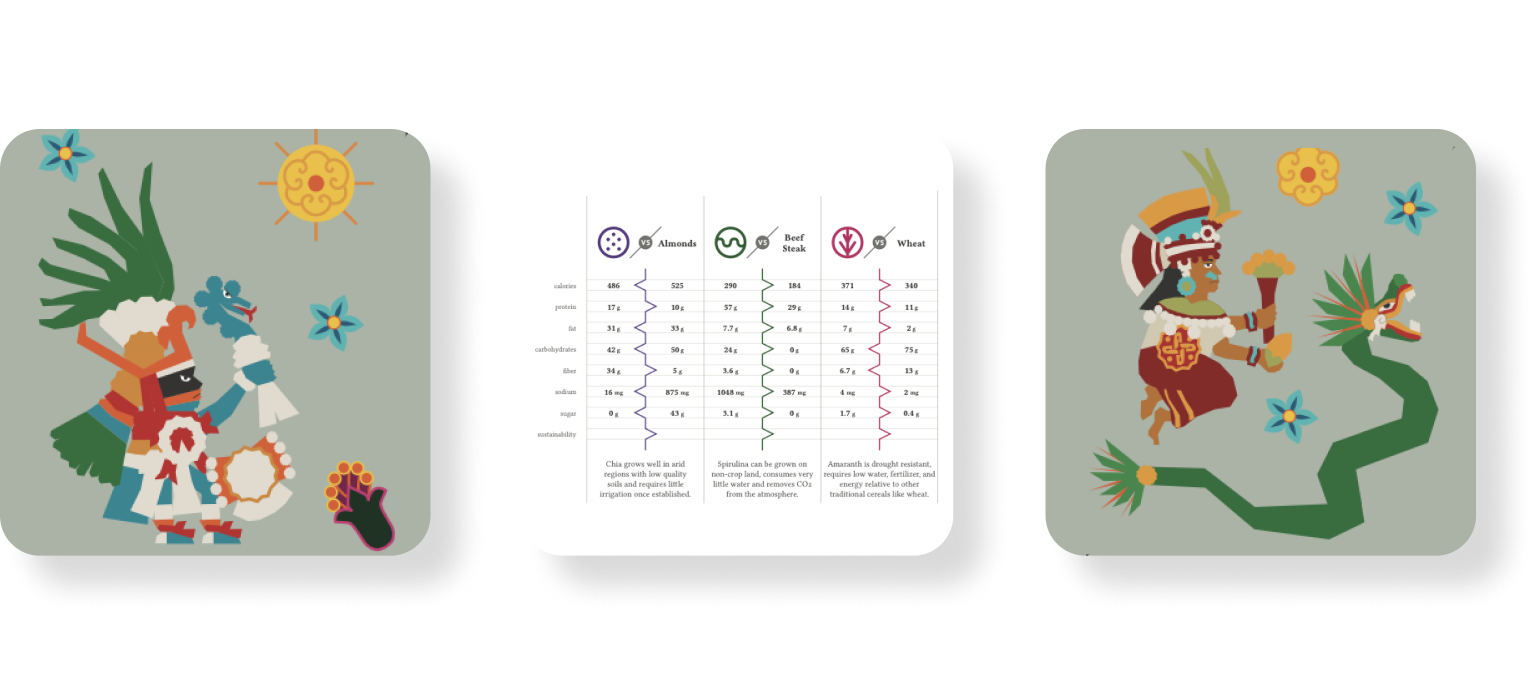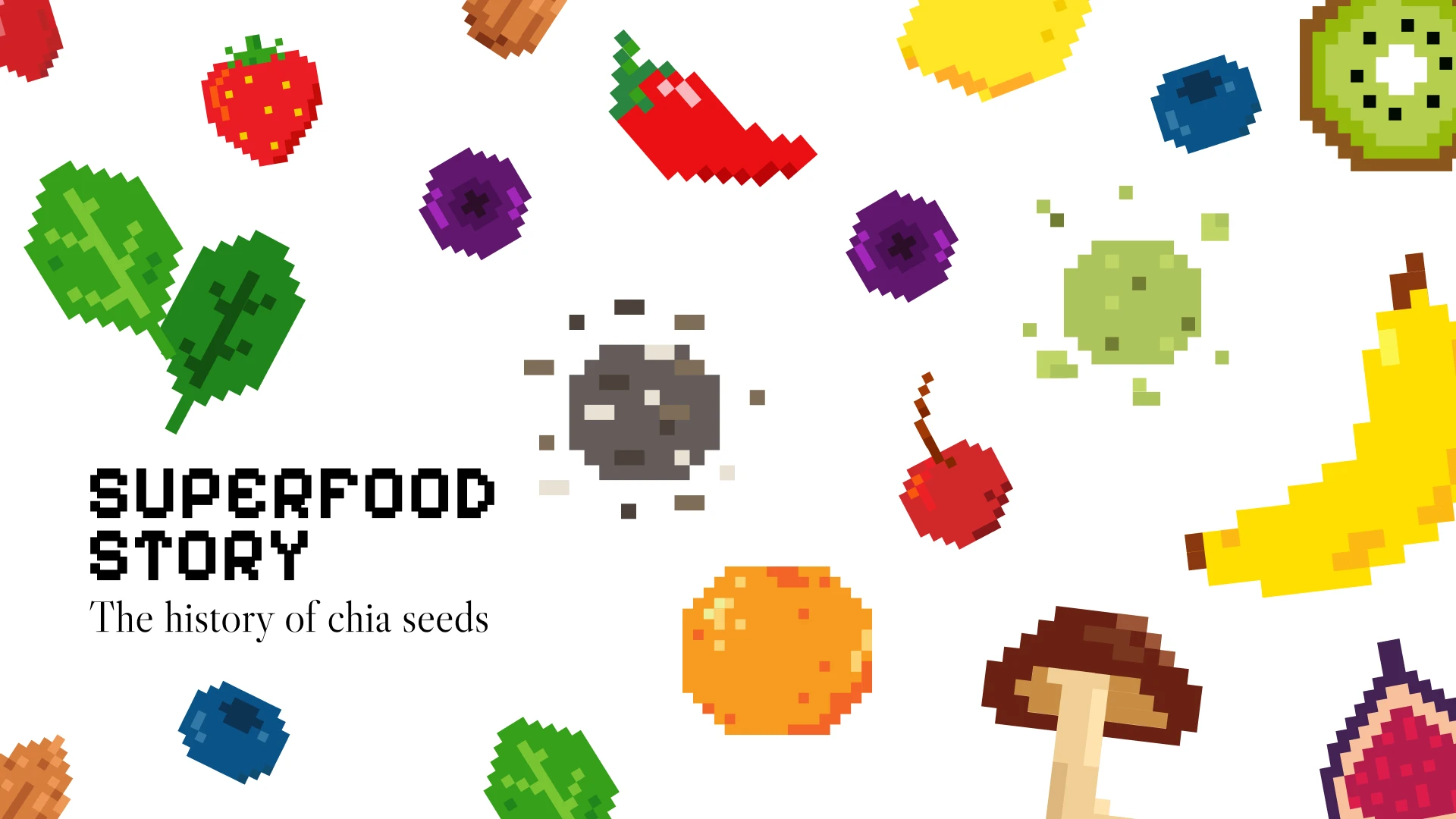
Superfoods
→ Researching superfoods and chia seeds to understand their origins
🏆 Outcome: Launched website
- Client/Team: Elisava - Master Thesis
- Timeline: 9 months
- Role: Project Lead | Reasearch + Writing + Design + Implementation
- Tools: Illustrator, Github, Adobe Suite
📐 Design process
🚩 Challenge
Superfood Story is my master thesis project exploring the hype around superfoods through the lens of chia seeds. While they seem like a modern trend, many so-called superfoods have ancient and indigenous roots.
The project includes a research article uncovering how chia was banned, forgotten, and later rediscovered, and a short video game where you play as a chia seed navigating its own history.
This work aims to reconnect nutrition trends to their cultural and historical contexts, inviting users to rethink what we call “super.”
-
💡Concept
Understanding the origin of superfoods -
🎯Goal
Explore the cultural and historical journey of chia seeds -
⚠️ Considerations
Large scope of research, Complex network of food and culture, How to make historical research engaging -
✅ Solution
An article and interactive videogame that blend education with entertainment
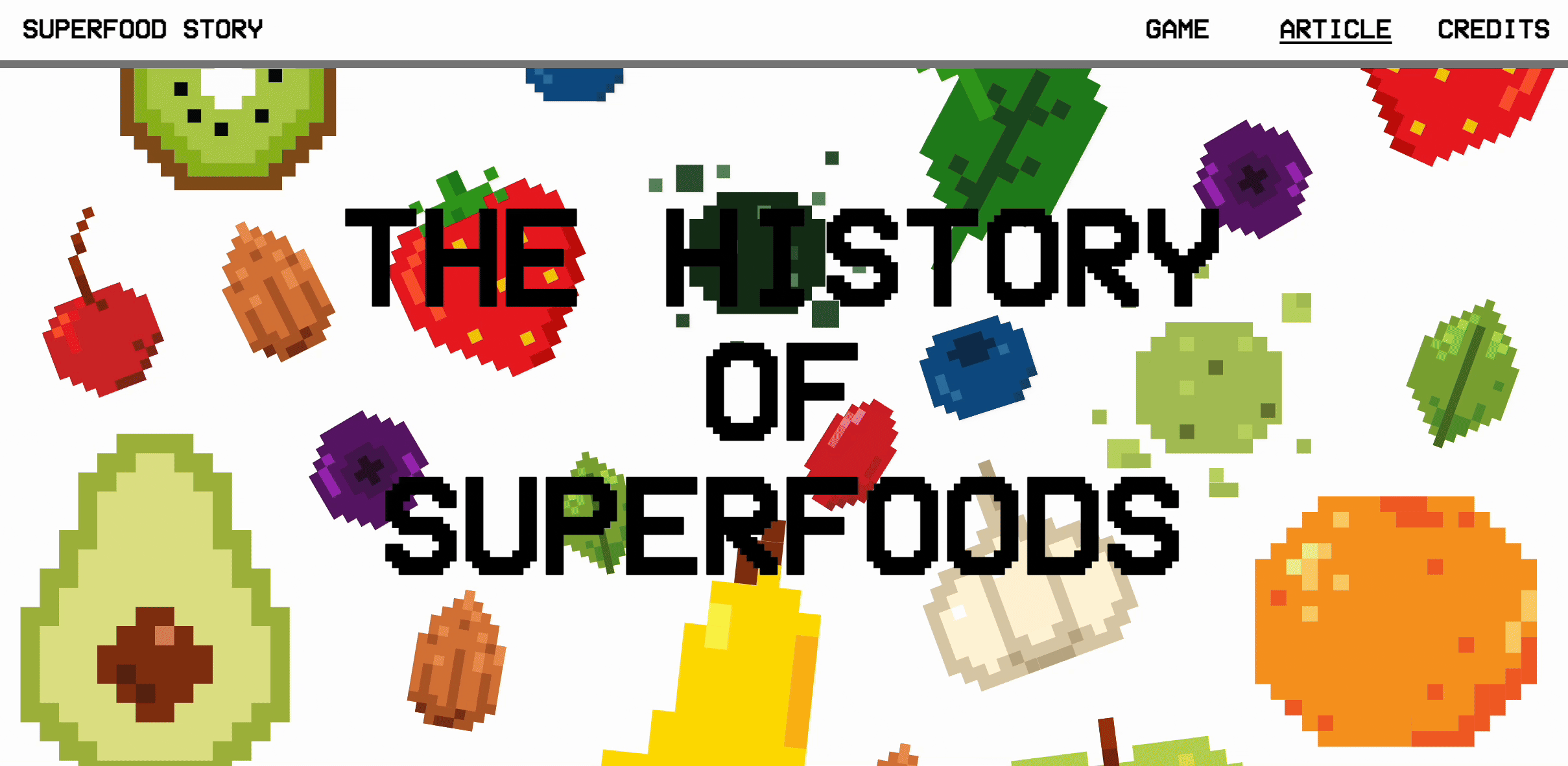
Website overview
🧪 Approach
I began with deep historical research into indigenous foods and quickly noticed a pattern: many so-called superfoods were banned or erased during colonization. My initial scope included amaranth and spirulina, but the narrative felt scattered. I chose to focus on chia seeds, whose story of cultural loss and revival stood out as uniquely powerful.

Exploratory food photography
-
🔍 Research & Discovery
- Investigated ancient Mesoamerican diets and the colonial history of banned crops
- Curated nutrition studies, market data, and documentaries to contextualize chia’s cultural and commercial journey
- Explored visual formats like food photography, illustration, and conceptual maps to shape the narrative
- Identified a storytelling gap: a need to connect modern food trends with their indigenous roots in accessible, engaging ways
Early explorations
To share this story widely, I defined two key formats: a digital article for context and a short video game to let users experience the emotional weight of chia’s history. Inspired by the seed itself, I chose pixel art—a visual style built from small parts coming together—to symbolize growth, loss, and rediscovery.
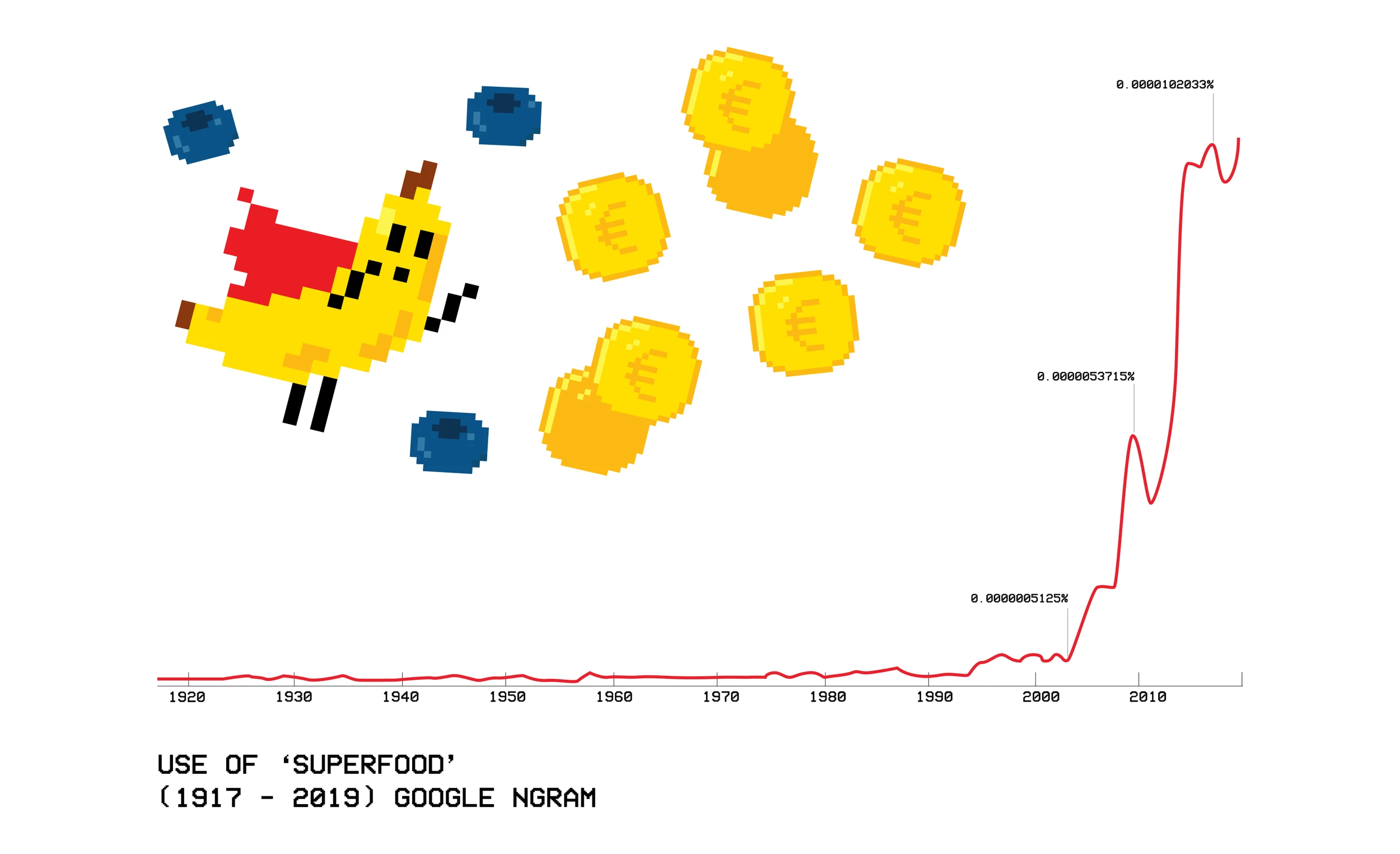
Graph suggesting a correlation between popularity of superfoods and increase in market share
The process emphasized storytelling through interaction. Rather than passively reading, users could embody the seed’s journey—from ancient times to supermarket shelves—building empathy and connection along the way.
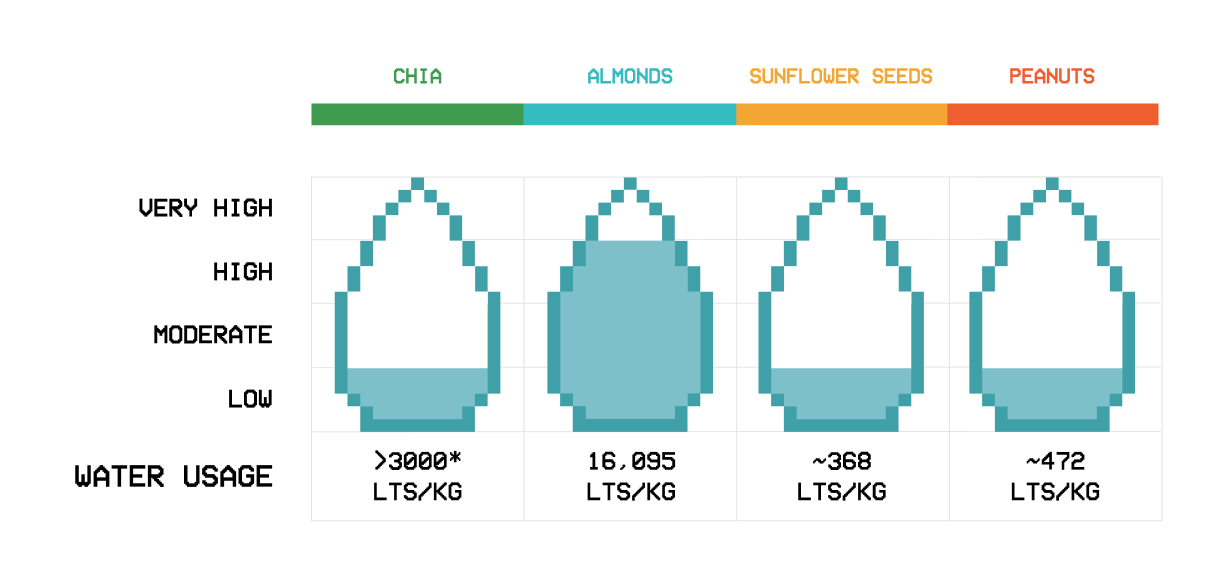
Water comparison for crops similar to chia seeds
🖌️ Decisions
I designed the article to fully embrace a video game theme, making the experience both cohesive and playful. Key concepts were paired with visualizations and data-driven charts, and I created animated loops and illustrations that personified foods to guide the reader through the story.
I wrote a scrollable narrative article that introduced superfoods as a marketing term before tracing their indigenous origins, with a special focus on chia seeds. Each paragraph was supported by custom visuals, including illustrations and animations. I developed the full front-end and hosted the site on GitHub.
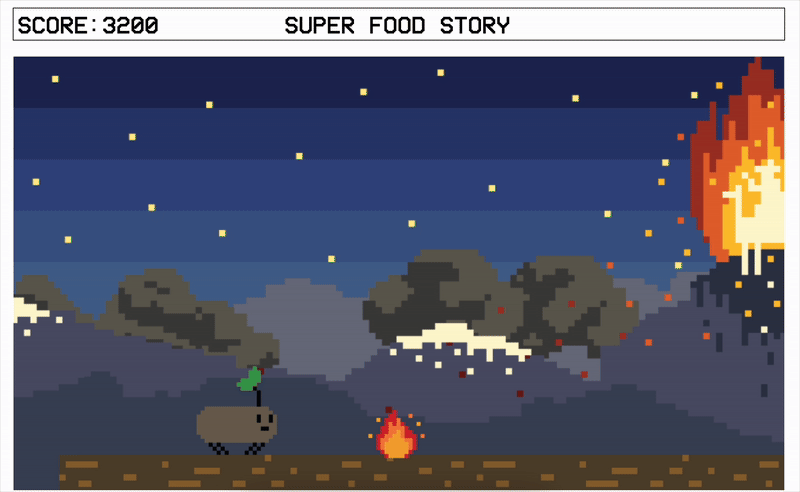
For the video game, I collaborated with a programmer and a music composer. I led the visual and gameplay design, while they implemented game mechanics and a soundtrack that deepened the emotional experience.
I’ve always seen video games as powerful tools for storytelling—letting the player become the protagonist. In Superfood Story, the simple mechanics and emotive soundtrack helped immerse users in the narrative and build a deeper connection with the content.
The game was structured into four chapters: discovery and cultivation of chia seeds, their destruction during colonization, their disappearance from history, and their modern rediscovery as a superfood.
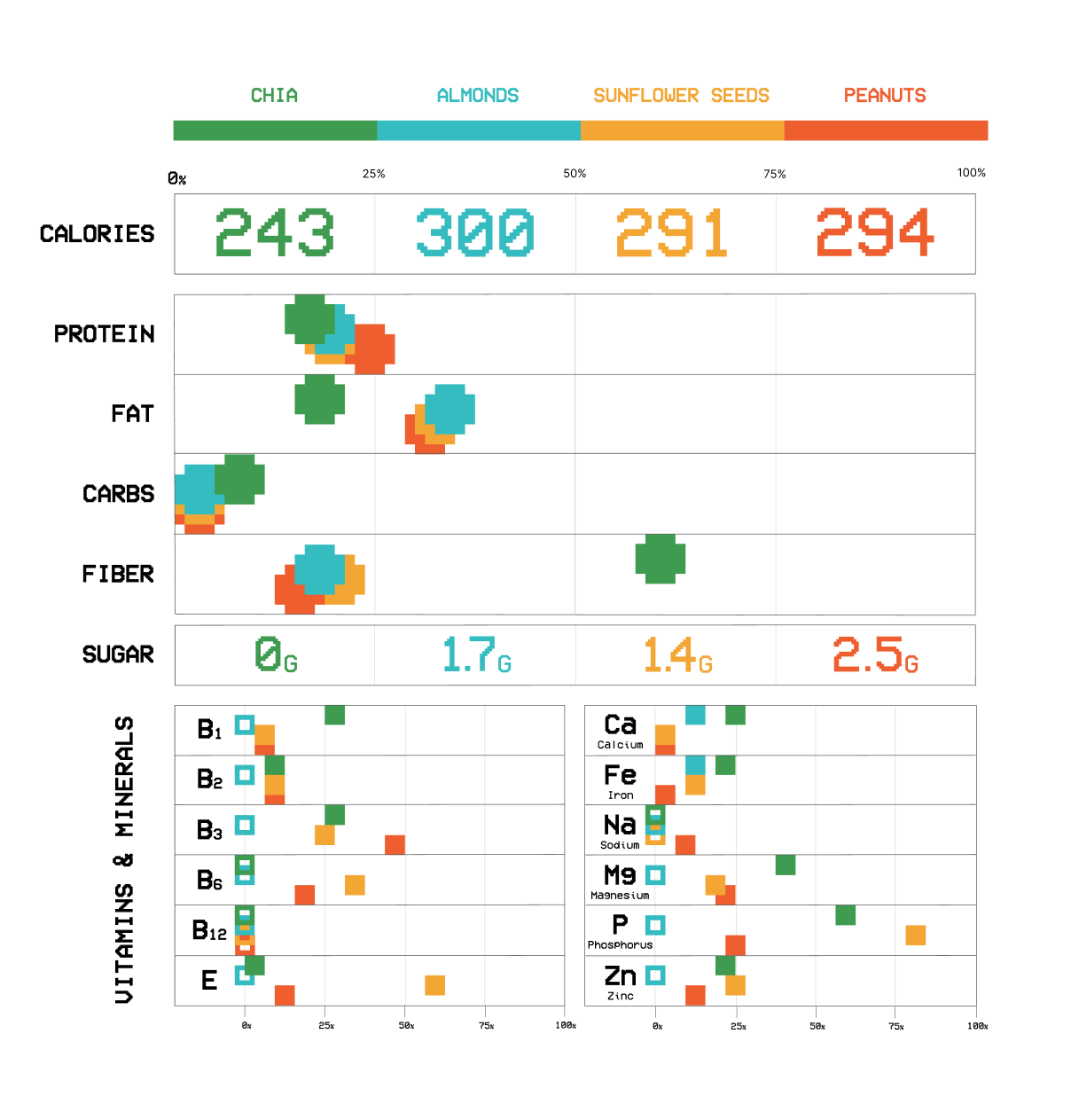
Micro and macro nutrient comparison for crops similar to chia seeds
🌟 Results
🏆 Outcome: Launched website
The project received positive feedback for its distinctive art style and engaging storytelling. The final output included:
- Research distilled into a simple, accessible narrative
- A story that centers indigenous voices and history
- An interactive article exploring the journey of chia and superfoods
- A desktop video game with original pixel art and music
- A unique visual identity tying all elements together
- Custom visualizations and looping gif animations to enhance comprehension
If I had more time, I would have loved to optimize for mobile, add interactive animation triggers, and create a campaign to amplify the story. I hope to one day expand this work to include other indigenous foods.
🔭 Closing statement:
Food is so essential that we often overlook its
complexity
This project became a journey of discovery, not just about chia seeds, but about the deep cultural connections food carries. To tell this story the way I envisioned, I had to grow as a designer, storyteller, and developer.
The process reminded me how powerful design can be in making complex topics engaging and accessible, and how keeping storytelling at the center can lead to more meaningful work.
While this project isn’t perfect, I worked hard to honor a tiny seed and develop new skills along the way. The story of chia seeds is full of ups and downs, but ultimately, it’s a story of survival.
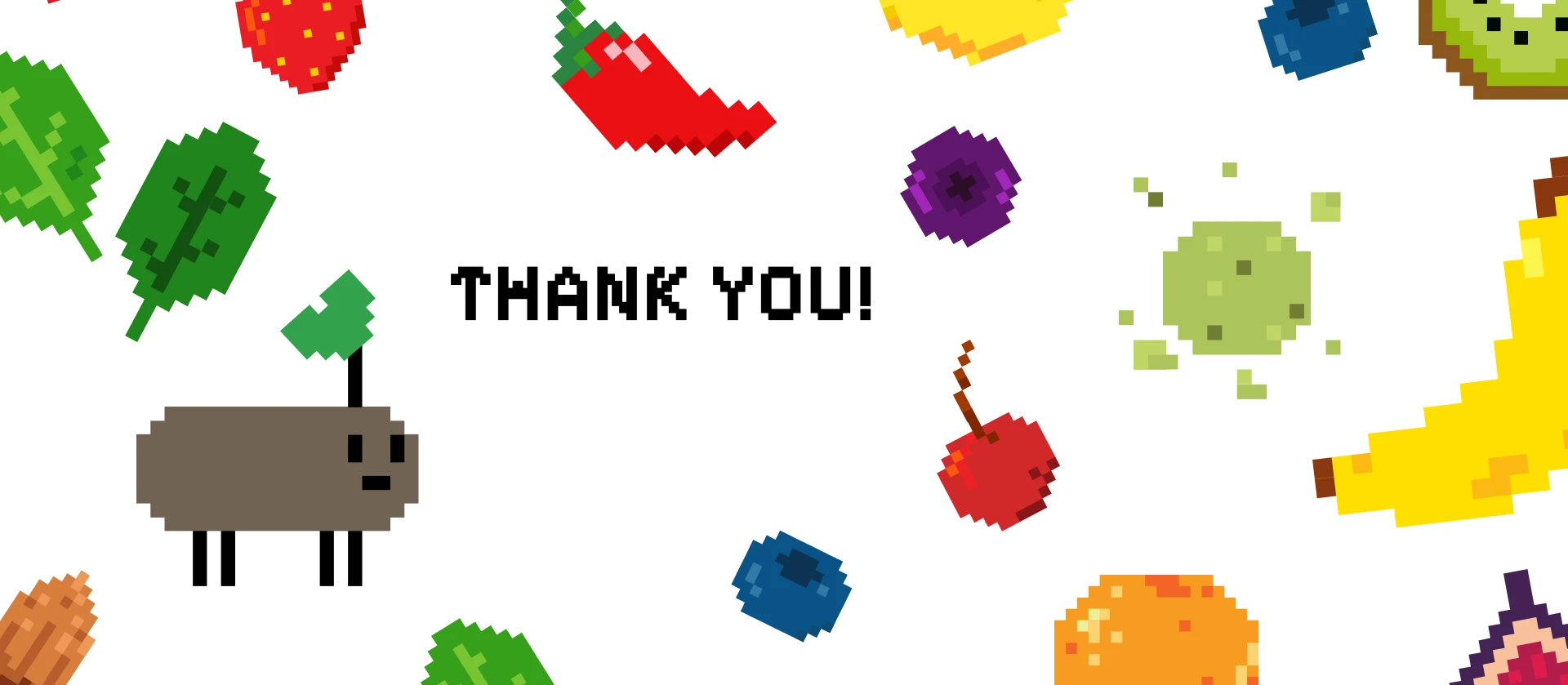
Thank you for reading!
See other projects:
